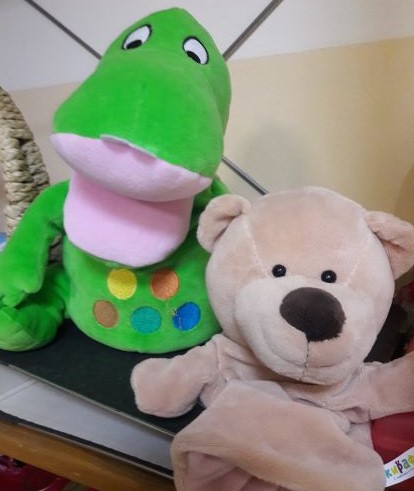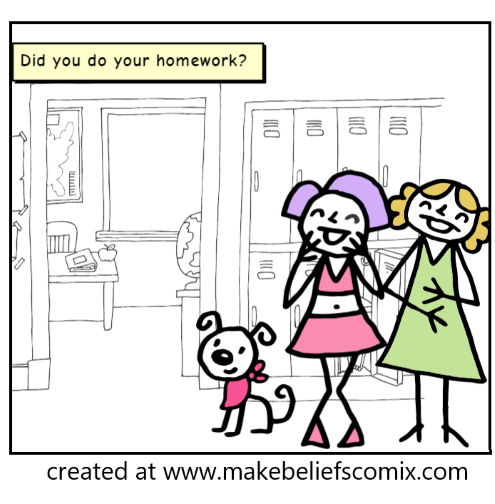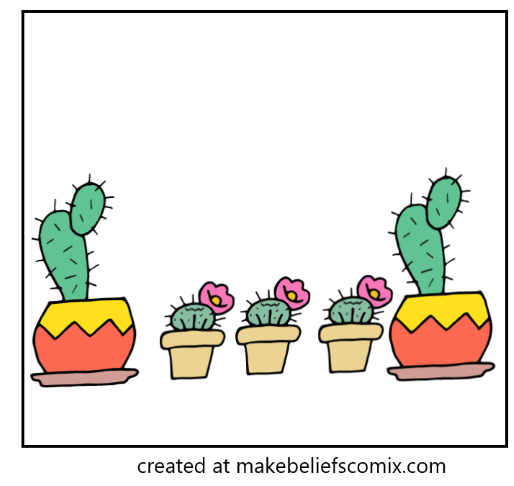No, just kidding.
Teaching teens.
A few weeks ago, I got to do my personal version of The Matrix: Reloaded: after eight years’ break, I went back to the forest to teach at a summer camp. If you’ve never had a chance to try it, there is one thing you should know – camp, among all the other things, is also an alternative universe and an academic year in a nutshell, and hence, a perfect opportunity for reflection. This time about teenagers…In a flipped classroom manner.
The last scene
It is one of my end-of-the course traditions, a good-bye letter writing. I participate, too because it is a chance to tell my students that they are amazing. The card with my name is in the classroom, to model the activity but I never specifically encourage them to leave any notes there. Asking for compliments is just…not cool, basically. But, somehow, this page never stays blank. Magic, I presume😊
I don’t need to tell you that it is really sweet and touching to be getting a letter like that:
‘You are the best teacher’‘I liked ur lessons, thanks’, ‘Thank you for interesting lessons! You are the best teacher’, ‘I do love you!’, ‘love u’, ‘it’s really interesting and funny. It’s better than lessons at school’
A letter that is followed by an avalanche of hugs. And a cabbage, a капуста, a group hug, another camp tradition. In the middle of which, this year exclusively, one is just trying not to think of the coronavirus pandemic and social distancing.
Looking at the last scene, you’d think that we had two weeks’ worth of the most amazing lessons, in the great atmosphere, with the students who wanted to learn and make the most of the summer camp lessons’ opportunities. A dream come true!
Only it wasn’t that.
The typical lesson
It’s not the students tried to find excuses not to be in class or that they complained or, even refused to participate point blank. No, they were there, every morning, all twelve of them, they did do what I asked them to but a regular lesson would also feature at least one of the following:
- Yawning
- Resting their heads on the tables
- Sighing deeply when you present the model of the project
- Sighing deeply when you explain how the walking gallery is going to work
- Sighing deeply when you hand out the papers
- Rolling their eyes when you want them to mingle
- Chatting (in English but not about what they were supposed to)
- Not sitting like the model students from the stock photography snapshots
- Asking (seemingly) provocative questions
- Saying just what they think, no filter whatsoever
- Answering in single words
- Never volunteering just to do something
- Questioning the point of every other activity and trying to convince you to abort the whole plan
- Sitting with a perfectly expressionless face
- Sitting quietly until you call out their name and ask them directly
The bad news is…
…that, paradoxically, starting the academic year and the course might actually be easier with the younger students, primary or pre-schoolers. Yes, classroom management and behaviour will be a challenge but the kids will be expecting to be charmed, to be swept off their feet with your puppets, stickers, flashcards and your smile. You will have to cast the correct spell but once you do, they will be on your side, within the first five minutes of the lesson, stars in their eyes… And yes, if you are confused and you don’t quite know what you are doing, the magic will be very short-lived and you will be in trouble, but a little bit later.
It does not really work that way with teenagers. They will probably not be running around the room and demolishing the classroom while waiting for you. They will not cry or ask to go out to see mum. They will not fight over the last pink marker. What a relief. Still, the first few lessons might feel a bit awkward for the teacher. No matter how much enthusiasm you project and how much energy and effort you put into the lesson preparation, the reaction that you get might still be more resembling of Coke that has been standing in the fridge for too long – still admittedly a liquid, but as flat and un-fizzy as could be. And nowhere near the ‘WOW’ effect that you were going for. In lesson one and in lesson two and in lesson three…Oups.
The good news is…
…that it is just the way things are and that it is not the teacher’s fault, usually. Teenagers are a more demanding audience and it takes more than just one academic hour and one set of stickers to charm them.
It makes me think of a window sill or, better even, a greenhouse, with long rows of pots, with all the imaginable species and variations of cactuses. Most of them with needles, long or short and always sharp. Or those that look like soft white hair only are as prickly and unpleasant as all the more obvious ones.
It would be silly of me to think that one blog post can effectively summarise everything that has been written about teenagers and growing up so I am not even going to try. But perhaps these few comments and ideas will make someone’s life in the classroom a bit easier. Here we go.
Peers are more important than adults.
We, dear teacher, we do not really matter that much. We are not the priority. In a group in a language school that has just been put together and in which the students don’t know each other, their energy and time and attention will inevitably be devoted to figuring each other out and finding their own place in the group. At a state school, they will probably know each other very well and the group will have been formed already but, because of that, they will act as a group, as a team, all against the world (which, in this case, is us, unfortunately). It will have nothing to do with aggression and real dislike. It will be all about not breaking the ranks to make the teacher happy. Because, really, who would want to do that?
You can help them by facilitating interaction with different people in the group. If it is teacher-imposed, it will be easier for them to put up with. They are not losing the face because they have to do it but they will be given a chance to get to know each other and to slowly bond with everybody, working together on a task, playing the game, role-playing and so on. Especially if done frequently, in a random manner (for example using cards with their names that one of the students will pick out from the bag, thus forming the teams) and if punctuated with the periods of ‘the safety blanket’ that is sitting and collaborating with their favourite people.
It works well both for the newly-formed groups and for the existing groups that the teacher only takes over because in any case it gives plenty of opportunities to observe how different students interact with different partners. For example, someone who, at the first glance, looks like the ringleader of the group might turn out to be the most laborious student when separated from his or her followers…And the quiet student might start talking when paired-up with someone who is not their best friend.
The teacher is, potentially, an enemy, too.
First of all, the teacher is old and has no idea what life is about, what struggles they everyday might bring and how difficult it is to be a teenager. Yes, the teacher used to be a teenager, too, but, clearly it has been a while and things have been forgotten already.
Second of all, the teacher seems to be on some kind of a mission (duh!) and she always wants something. Usually, that particular thins is the least interesting option of all of those available at the moment. As if that has not been bad enough, the teacher has the power to make the students do things, even if only those little, non-oppressive things such as answering questions, completing the homework tasks or changing partners. Fighting back is possible, but in the end, it is the adult who has the winning card.
Last but not least, this teacher is new and it will take some time for everyone to figure out if he or she is to be their own Professor Dumbledore, Professor Snape, Professor McGonagall or …Professor Umbridge. Teenagers do not have a lot of life experience but all of them have already had a chance to be exposed to different kinds of teachers, not only in books and films. They will be bringing this prior knowledge into our lesson, too and we will have no choice but to deal with that.
You can help by being yourself and smiling and by not letting their apparent lack of enthusiasm get to you. ‘Time is on your side’, as Mick Jagger says.
A few years ago, Katherine Bilsborough gave a great talk at the IH YL Conference in which she called for ‘More Democracy in the Classroom’ by getting the students involved in the shaping of the lesson and taking responsibility for it. It was a real eye-opener for me as I realised that my 4-year-olds get to make more decisions about the lesson (the favourite songs, the favourite games, the colour of the chair etc) than my pre-adults, who, actually, are the ones who need the most practice.
Drafting the class contract might be the first step but the students can also make some decisions regarding the homework they want to do, the order of the activities in the lesson, the test date, the topics to include…All within reason, of course, but something to let them see that it is not a one man show and that they matter, too.
They are looking for and finding their own voice.
That is why they are always ready to potentially question anything that we say (we are old, we don’t matter). They will be doing their ‘Mary, Mary, Quite contrary’ just to see where it gets them and how you are going to react to their actions and views and opinions and questions. Will you accept their weirdness and their alternative approach or will you try to mould them into something?
You can help by developing their critical thinking as well as including a lot of open-ended activities and opportunities for them to express their opinions and views. Teaching them how to agree in English, how to disagree politely, how to express doubt, justify opinion will all come in handy. All of it will come in handy, in your English lessons and in their lives.
The last scene. Revisited.
So here they are, your cactuses. Until they know that they are safe, until they confirm that they can trust you, they will be not be ‘nice’ and ‘sweet’ and ‘lovely students’ that every teacher dreams off.
It might take some time. It might even take the whole course. And only when it is time to say good-bye, during one of those final lessons, they take the masks off and you get to see the real, vulnerable people. People who like you, people who respect you and people who appreciate what you do. Even though they do their best not to show it.
They are also the people who care enough to ask ‘Will you remember us?’
Of course, I will.
Dear teacher, if you are preparing for the first lessons with a new group of teens, just fasten the seatbelt and get ready for the ride. And if you have got any oven mittens lying around, pack these, too. They might be just the thing you need.
Happy teaching!
P.S. I have always loved cactuses:-)




